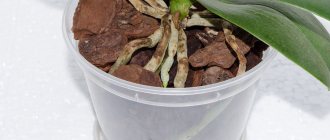Marigolds are an unpretentious plant that not only decorates the garden, but is also able to repel some pests. By the way, what kind of pests you can find out from the article on our website - mixed plantings of garden crops. And many, knowing the beneficial qualities of these flowers, wonder when and how to sow marigolds? Which method is better, seedlings or non-seedlings? How to grow marigolds in one or another region of our vastness? You will find answers to all these questions in the article on our website, when and how to grow marigold seedlings with step-by-step instructions.
When and how to grow marigold seedlings basic information
As already mentioned, marigolds repel some pests. They are also good for the soil. For example, if you cut off the top parts of the Chernobrovets in the fall and spread them out on beds prepared for spring sowing, then as they decompose, various essential oils will get into the soil. Which in turn will repel various pathogens: fungi, viruses, bacteria.
And the main question that many ask is how best to grow marigolds, in what way. The fact is that seeds do not germinate in all soils; they also need a certain climate, and so on. And in order not to take risks, it is recommended to grow marigold planting material. Moreover, seedlings are already more unpretentious to both soil and climate.
How to replant and can this be done during flowering?
Before transplanting Chernobrivtsya, many people ask the question: is it possible to carry out the procedure with flowering plants? Since marigolds are unpretentious, replanting during the flowering period is of course possible, but it needs to be done correctly:
- After watering a flowering plant, you need to remove it along with the soil from the container.
- Transplant into a watered prepared hole. Do not choose a place with direct sunlight for transplanting already flowering marigolds, or create artificial shade for them (branches, additional improvised materials) until the plant takes root (for 5-7 days).
- Water regularly after transplanting.
Marigolds are unpretentious flowers and are easy to care for. They have a lot of benefits. And they are pleasing to the eye - and their smell repels insect pests (which is why gardeners often plant them next to vegetables that are susceptible to bugs). Marigolds also have beneficial medicinal properties.
At what time in which regions and how are marigolds grown?
Any flower in the garden is primarily a symbol of summer. Roses, tulips, lush peonies, and of course marigolds. Which, like the bright yellow sun itself, attract us with its beauty, its lush flowers.
If you stand next to a flowerbed of these wonderful flowers, you can hear the buzzing of bees, which in considerable numbers are working on each petal, collecting nectar. But a shaggy bumblebee landed on the top of a young marigold, causing the flower to bend slightly under its weight.
It's all very beautiful. So let's answer our main questions.
In which regions and at what time are marigolds grown without seedlings?
There is such a variety of marigolds, it is called rejected low-growing. This variety is not at all afraid of open ground, and therefore they can be grown from seed immediately in a permanent place. In the south of the country they are sown in April, and in regions with a cool climate throughout May.
In areas such as the Volgograd region, Krasnodar region, Rostov region, Stavropol region, seeds can be immediately sown in the ground.
My mother always grows marigolds. And often leaves dried out plants in the flowerbed. They are covered with snow, they endure severe frosts, and in the spring they drop their seeds and grow again. So, if the weather and soil permit, then marigolds can be grown without seedlings. By the way, such flowers bloom longer.
Helpful advice. If you still decide to grow marigolds without seedlings, but are worried that the weather may change for the worse. Experienced gardeners recommend covering crops with agrofibre or film. This way you will save your crops in case of worsening weather conditions.
When to plant marigold seedlings in the middle zone and other regions
In different regions, due to the individual climate, sowing and planting of seedlings shifts. For example, in Moscow, in the Moscow region and in the middle zone, it is better to sow marigold seeds for seedlings in the second half of March. Replant in open ground in these regions in the first and early second ten days of May.
For regions where the weather is characterized by dampness and low temperatures: Siberia, Leningrad region, the Urals, in these areas they begin sowing at the end of March, at the beginning of April.
In order not to make a mistake with planting, it is good to know the growth period of seedlings. For example, marigolds develop from the moment of germination to planting for 1.5 - 2 months. And if you know the climate in your region, then calculating when to sow seedlings will not be difficult.
Beneficial properties of marigolds
Experienced gardeners grow a lot of marigolds on their plots. For what? If we leave aside the benefits of tagetes for the human body and its use for medicinal purposes (and this is already a proven fact), let's see how to use marigolds to protect our garden plants.
- If cabbage of any kind is grown on the plot, then around such a plot you need to plant several bushes of marigolds, which will rid the plantings of white butterflies, from the egg-laying of which caterpillars develop - the most dangerous pest of cabbage.
- It is effective to use tagetes as green manure. After growing the plant, the soil acquires a good structure, gets rid of nematodes and wireworms, and fusarium fungus. True, the green mass suitable for green manure grows only in the second half of summer.
- Marigolds have a great influence on the Colorado potato beetle, which during its main flight avoids potato plots with tagetes plantings. Of course, for large plots you need too many marigolds, but it is quite possible to protect several rows of potatoes from this pest.
- Young seedlings of fruit trees can also be effectively protected from many pests if 1-2 marigold bushes are planted under their crown.
How to sow marigold seeds for seedlings
It is described above in which regions and at what time it is possible to sow marigold seeds using the seedless method and the seedling method.
Kupena flower
Many novice gardeners do not want to take risks and experiment with sowing seeds in open ground, and for them there is a simple solution to grow seedlings of these beautiful flowers.
To grow seedlings, you can use a simple box, which you can make yourself from plywood, or buy a special container at a country store.
The box is filled with soil from the garden or you can purchase special soil from the same store where you buy the container. Next, the soil is shed generously with warm water and allowed to soak for 1 – 2 hours. After this, they proceed directly to sowing the seeds. They are scattered or randomly, but better in rows, at a distance of 2 - 2.5 centimeters from each other. This distance is maintained both between seeds and between rows.
The seeds are sprinkled with soil in a layer of no more than one centimeter. Next, the container is covered with film or glass. To create a microclimate inside the container.
Features of the plant and popular varieties
Tagetes (marigolds, marigolds and other names) belongs to the Asteraceae family and, depending on the species, can be annual or perennial. The bush can grow from 20 centimeters to almost one and a half meters in height. The foliage can be openwork and pinnate, the inflorescences-baskets can be simple or double, in color from yellow to brown with darker or lighter inclusions. Reproduction occurs through seeds and one fruit can contain from 500 to 700 grains. In nature, there are more than twenty species of marigolds, but only 4 have been cultivated, which are also divided into varieties.
Erect
Such marigolds are also called African marigolds. Almost always, the flowers of this species are single-colored, double and reach from 10 to 15 centimeters in diameter. The maximum plant grows up to a meter in height. This tagetes has several subspecies:
- variety Vanilla, with creamy white flowers with a diameter of 12 cm and a height of 70 cm;
- Kilimanjaro, or densely double marigolds, which also grow up to 70 centimeters in height;
- Antigua are the smallest of this species in height, only 35 centimeters. The inflorescences of the variety are large, lemon yellow or orange, 13-15 cm in diameter.
Marigold erecta (Vanilla)
Thin-leaved
This type of marigold began to be cultivated at the end of the 18th century, and now there are up to 70 varieties. This species differs from its relatives in its openwork-shaped leaves and delicate, subtle odor. Its inflorescences are small but numerous. The height of the bush is 35-40 centimeters. The root system of the species is well developed, which helps the plant easily survive the winter. This species produces red-orange, golden-orange and golden-yellow inflorescences. Popular varieties are Golden Jam, Lulu, Paprika and Gnome.
Marigold thin-leaved (Gnome)
Dwarf varieties
These kids came to us from the United States of America. They are also called border or Turkish carnations. Among the most popular varieties:
- Orange is a hybrid variety that grows up to 25-30 cm and blooms with bright orange large inflorescences;
- Eye of the Tiger. These are balls up to 7 centimeters in diameter, light orange in color with double flowers.
- Petite is one of the most colorful varieties: it can be from orange to light red.
Gabi lemon flowers and Bolero marigolds are also in demand among gardeners.
Dwarf marigold (Tiger's eye)
Low-growing varieties or Rejected
This plant, 50 to 60 centimeters high, is also called French. The inflorescences are usually spreading, up to 8 centimeters in diameter, and can be either double or smooth. Blooms for a long time with a large number of inflorescences. The most popular variety of this species is Bonanza, whose height does not exceed 30 cm.
Low growing marigold (Bonanza)
Caring for marigold seedlings after sowing
Further in our article, when and how to grow marigold seedlings with step-by-step instructions, we will talk about caring for marigold seedlings.
After germination, the film or glass is removed and the humidity is monitored. Regular watering promotes abundant flowering in the future.
Not infrequently, marigold is bothered by spider mites; in the fight against them, it is necessary to carry out the effect of sprinkling, and the mite, which does not like high humidity, will not be present on the plant.
In addition to watering and air-drip irrigation, it is worth paying attention to additional lighting. The fact is that seedlings without additional light can become very elongated and this is very bad.
But if everything is fine with your seedlings, regular watering, good light, they begin to grow profusely in the container and become crowded. So it's time to pick
Sow marigolds in a snail
The easiest way to make a snail from regular toilet paper.
- We apply three layers one on top of the other with a slight indentation;
- Wet the paper generously;
- Sow the seeds vertically using tweezers;
- Roll the paper;
- Wrap in plastic;
- Transfer to a dark place.
After the shoots appear, unroll the roll, water it and sprinkle it with soil. Then we wrap the snail in a bag and leave it on the windowsill. It is better to sow marigolds in this way at the end of March - April. In a week the sprouts will be ready for transplanting.
Picking marigold seedlings in two ways
Picking will have a very beneficial effect on the further development of seedlings. Seedlings dive in the phase of formation of 2–3 true leaves. When picking, seedlings are buried down to the cotyledon leaves. This way, the transplanted seedlings will be strong and stocky.
Dive at a distance between rows of 4 - 5 centimeters, between plants 2 - 3 centimeters. Let's consider two methods, in the furrows and using tweezers.
Picking marigold seedlings into furrows
To do this, you need to take a box much larger than the one containing the young seedlings. It must be at least five centimeters high. The box is filled with soil, leveled so that the surface has no depressions or depressions. This is done so that there is no stagnation or drying out of the hills.
Furrows are made in the soil, so deep that the seedlings are deepened to the cotyledon leaves. The soil around the plants is lightly squeezed.
Beautiful lilies in the garden
Step-by-step instructions for sowing
Marigolds are unpretentious plants, so even a novice gardener can cope with their cultivation. To get a healthy plant that will bloom for a long time, you need to follow a number of rules.
Selection of capacity
You can choose one of the options as a container for sowing:
- in a container. These can be special boxes, plastic cassettes, cups or containers.
- in the snail. This structure is not difficult to build. Below we will discuss this method in more detail.
- sowing in boiling water. For this method we need a container with a lid.
Tagetes seeds are quite large, so it will be more convenient to sow them in an individual container with a volume of about 0.5 liters. Here preference should be given to peat pots or tablets, plastic cups, and even better - cassettes. Having planted the marigolds in a common box or bowl, they will need to be picked. The seedlings will survive this procedure just fine.
There are no strict rules when choosing a container, so choose what seems more convenient for you.
Seed selection
Marigold seeds can be purchased at the store or collected yourself.
When buying seeds, pay attention to the reliability of the manufacturer and a trusted store. You should not buy the cheapest material, as it may be of poor quality. The packaging must not be damaged. The pack should contain recommendations on the timing of planting, planting in the ground, information about the plant and contacts of the manufacturer.
Collecting the seeds yourself is not difficult. Exceptions are hybrid varieties (they are marked F1 on the packages). Harvesting should be done after flowering, when the flower stalks turn yellow, but before frost sets in. The weather during collection should be dry. Flowers should be carefully collected, seeds removed, and dried on paper at room temperature. Then the material should be wrapped in cloth or paper and stored in a dry and dark place. Such seeds will remain viable for up to 2-3 years.
If several varieties were planted in the flowerbed from which you are harvesting, your seeds will acquire mixed properties. Future flowers may differ from those from which the material was collected. This happens due to cross pollination.
Seed preparation
Marigold seeds will germinate perfectly without any special preparation. But to get 100% germination, you can soak the seeds in a solution that will stimulate growth. Such drugs include, for example, “Zircon” or “Epin-Extra”. The packages of these products contain detailed instructions on how to make the solution and soak the material.
Germination can also be used as pre-sowing preparation.
In order for the seeds to sprout, they need to be placed on a cotton cloth, then wet it, cover with another piece of cloth, wrap in a bag and leave in a warm place for 2-3 days. Cotton pads are also suitable for germination.
You can also soak the seeds in a weak solution of potassium permanganate.
All these preparatory procedures are not necessary, but will help you get more resilient plants with lush flowering.
Soil preparation
Although Tagetes is unpretentious, it still has some soil preferences. They should be taken into account for better development and growth.
The soil should be loose, breathable, light and sufficiently fertilized. Suitable for planting is universal soil for flower seedlings. But you can prepare it yourself. Ideal mixture recipe:
- 1 part clean river sand;
- 1 part humus or compost;
- 2 parts peat.
You can add soil from the garden (2 parts) to the soil mixture, but then the peat will need to be reduced to 1 part.
Before planting, any mixture should be additionally treated with fungicides. The container for planting can be treated with the same substances. This will also help avoid blackleg.
You can buy Fitosporin, Maxim and other products in the store, dilute them and use them according to the instructions.
Calcination of the soil also shows excellent results. The sifted soil can be steamed in a double boiler for 60 minutes or in the oven.
After any soil treatment, you will need to wait 14-21 days and only then begin planting.
Direct sowing
Let's look at sowing marigolds for seedlings step by step.
- It is necessary to place drainage material at the bottom of the selected container. These can be small stones, perlite, ground brick or expanded clay. The layer should be about 1.5 cm. If you use peat tablets or pots, drainage is not needed.
- Fill the container with soil, leaving a small distance between the soil and the edges of the container.
- Moisten the soil generously. The easiest way to do this is with a spray bottle. Use warm, clean, settled water. No need to use tap water!
- Then arrange the seeds. This can be done either with your hands or with tweezers. They need to be laid horizontally. Do not stick seeds into the ground under any circumstances! If the containers are individual, distribute one seed into each. If the drawer is shared, make grooves (you can use a regular ruler) no more than a centimeter deep. Leave 2 cm between the grooves. We leave the same distance between the seeds. You can ignore this rule, and then make a pick, which the plants will tolerate well.
- Cover the crops with soil. Do not overdo it, the layer should be no more than 1 cm. And then lightly press, but do not compact. It is better to make the top layer of soil from a mixture of sand and soil in equal proportions. To avoid blackleg, a disease to which marigolds are susceptible, it is worth mixing a little wood ash into the sand and soil.
- Water the crops again. Only a spray bottle is suitable here so as not to damage the seeds. Here, too, it is important not to overdo it, so as not to compact the soil too much.
- Make a greenhouse. Marigold seeds love warmth and humidity. To give them the necessary conditions, cover the container with glass, film or a lid.
- Label your seedlings. Indicate the variety, name of the flower, date of sowing.
Place the container in a warm, bright place where the temperature is not lower than 20-22 degrees and there are no drafts.
Preparing suitable soil
Marigolds are not picky when it comes to soil - a wide range of commercially available universal soils for seedlings are suitable for sowing. The main thing is that the soil should be light in structure and not completely poor. An optional, but useful additive for greater soil permeability would be some kind of loosening component.
Vermiculite is a good additive for soil mixtures
It is enough to simply prepare a suitable soil mixture with your own hands: 1 part humus, 1 part turf soil, 1 part low-lying peat, ½ part sand.
Although marigold seedlings rarely get sick, excess moisture can cause blacklegs, so the soil should be calcined in the oven or steamed in a water bath for 60 minutes. Also, to avoid water stagnation and disease, you can prepare drainage (expanded clay, small crushed stone, crushed brick), which is especially important when sowing in a common container.
Seed preparation
You can buy seeds, or you can use your own from your flower garden if you prepared them in the previous season. Just remember when planting your seeds that hybrid seeds do not retain the properties of the mother plant. And with varietal plants, everything is not so simple either - they are actively cross-pollinated, and if you have several different varieties growing nearby, then the seeds from them may not produce plants at all like you expect. In this sense, purchased seed material is more reliable (although mis-grading also occurs).
The shelf life of marigold seeds is quite long - 4-5 years.
But there is one caveat - if the seeds are ripe and of high quality, then in the first year they will have very good germination rate (up to 90% and above), but from the second year onwards, it will drop quite quickly. Therefore, if possible:
For sowing, you should take 1-2 year old seeds
Before sowing your own seeds, they are inspected - if the seeds are dark, then everything is fine with them, but if they are light gray, then it means that they were collected immature, such shoots will not sprout.
Marigold seeds have high germination energy, so you don’t need to soak them additionally in growth stimulants - they should sprout quickly anyway. However, if you still want to play it safe, you can use Zircon or Epin-extra according to the instructions.
Germination when sowing this flower crop is unnecessary - it does not provide virtually any time advantages, because even dry seeds sprout literally on the third or fourth day. Therefore, it makes sense to germinate only if there are doubts about the germination of the planting material and you need to make sure that everything is in order with it.
Care
After emergence of seedlings (3-7 days), the covering material must be removed and the ambient temperature reduced to 18 degrees Celsius. It is necessary to ventilate the seedlings daily, since now the black leg is especially dangerous for sowing. At this stage, you need to use drip irrigation using a syringe. It is important to constantly check the soil moisture; the soil should not be dry. It is best to place marigolds on the east or south side on a windowsill. There is no need to pinch the plant. After 7-10 days you need to make a pick and plant the seedlings.
How and when to dive
Seedlings need to be picked when the first three or four leaves appear. After thinning, there should be 5-7 cm between plants, the foliage should not touch. For the procedure, you can use a regular seedling box. The soil is the same as for sowing, but it does not need to be sifted. Complex mineral fertilizer (1 tablespoon per 5 liters) and wood ash (half a cup for the same volume) should be added to the soil. After the procedure, carefully water and do this regularly in the future.
It is necessary to deepen the seedlings by 10 mm; if the roots are too long, you can shorten them a little.
Hardening
2 weeks before transplanting into open ground, it is worth hardening off the plant. This way it will withstand replanting better, take root faster, and the marigolds themselves will be better able to withstand environmental influences. You should start by airing the room for several hours. After three days, the plant can be taken outside or onto the balcony. The main thing is that the temperature outside the window is more than +12 degrees. Such “walks” should initially not exceed 20-30 minutes. The time needs to be increased daily, but gradually. The same applies to light: in the first days we put it in the shade, then in a dark place, and at the end - in the sun.
Watering and lighting
While marigolds are still seedlings, they require good watering and a lot of light. If the plant does not have enough sun, growth will slow down and the inflorescences will be small. The main thing is to water moderately so as not to damage the root system, that is, moisten only after the soil has dried.
To increase daylight hours, you can use additional lighting lamps.
Fertilizer
Marigolds will need fertilizing several times during the season, so the flowering will be more intense and brighter. It is enough to feed 3 times during growth:
- when the sprouts are 10cm;
- when the first buds appear;
- when the inflorescences bloom.
Weed removal
Loosening will get rid of unnecessary weeds. This procedure is mandatory for any variety of tagetes. Do not forget about this, as weeds will take away the necessary moisture and nutrients from your flowers.
Loosening marigolds is an important part of growing.
Protection from insects and pests
The marigolds themselves repel many pests with their strong smell, but they can still pick up fungus or spider mites. This is mainly due to improper landing. If you find rot or fungus on a sprout or flower, you should remove it, sprinkle the hole with earth and treat healthy shoots with antifungal mixtures. If you find a spider mite, you can use folk remedies: infusions of garlic, wormwood, red pepper or tobacco dust. You can also use ready-made preparations: Fitoverm, Fufanon or Anti-mite.
Optimal conditions for sowing and germination
Any containers (or snails) containing seeds should be kept warm after sowing.
The best temperature for germination is 21-24 degrees Celsius.
At low temperatures, the process slows down, and seedlings may be more rare even when using high-quality seed material.
Marigolds sprout within 3-5 days.
If “loops” from the ground do not appear for more than a week, then this is an alarming sign, and if after ten days, then you definitely need to sow again. In general, as already mentioned, marigolds are usually distinguished by good and almost simultaneous germination if fresh seeds were planted. After the seedlings emerge from the ground, the film (bag, lid) is removed and the air temperature is lowered.
Seedlings appear and develop quite quickly
Agrotechnical requirements
Planting marigolds is widespread everywhere because they are unpretentious to environmental conditions, with the exception of only one parameter - temperature.
The plant is heat-loving; it should not be allowed to suffer frosts on the ground. The correct choice of date for planting seedlings or sowing in the ground allows you to avoid unfavorable factors.
For growing, it is advisable to choose an open, sunny place. They also grow in shade or partial shade, but the stems become elongated and the flowers become smaller. With constant waterlogging and shading, plant death is possible. Crowding during planting can be corrected by transferring excess marigolds to another location. They are not afraid of picking and transplanting even during flowering.
Soil requirements
The culture is unpretentious to the composition of the soil; it grows on sandy soils depleted of nutrients. Pre-fertilizing the soil before planting marigolds will allow you to grow strong, healthy plants with large flowers. To do this, you can use universal flower mixtures or complex mineral supplements. Organic matter can be represented by rotted compost or fermented infusion of plants. It is prohibited to apply fresh manure to the beds.
Predecessors and neighbors in the garden
You can plant marigolds in the garden after almost all crops, since they are little susceptible to diseases and damage by pests. Sowing tagetes in rows with vegetables, next to fruit trees and shrubs, will protect the latter from many diseases and insects, because the flowers emit a strong aroma that repels pests. Such a neighborhood is favorable for tomatoes, pumpkins, grapes, apple trees, pears, and raspberries. But there are cultures whose growth and development are hampered next to Chernobrovsk:
- peas;
- beans;
- radish;
- radish.
Climatic conditions
Marigolds are perennial and grow in mild climates. In the northern regions they will die due to low temperatures in winter, so annual varieties of tagetes can be grown there. Plants do not tolerate cold well, the stems and leaves turn black and are no longer restored, therefore, in areas with the possibility of a sharp cold snap, the seedling propagation method is recommended.
Strong winds, drafts and flooded areas are undesirable. The crop tolerates heat well provided regular and sufficient watering is provided.
Specifics of sowing in open ground
There are two ways of sowing: in spring and for winter. Marigolds are not planted in summer.
Sowing seeds before winter
This method is applicable immediately after frost, as follows:
- We form beds;
- warm up, but do not wet the soil;
- we plant in dry soil;
- We mulch with compost, sawdust or fallen leaves;
- cover with warm earth.
In spring, the mulch needs to be removed so that the earth can bask in the sun.
Spring sowing in greenhouses
We begin this process after the heat has established, when all the night frosts have passed. To protect the plants, you need to additionally cover them and put water in the greenhouse for more warmth and humidity. After the sprouts appear (7-10 days), the protective materials can be removed and the flowers can be watered. Do not forget about constant loosening and weeding.
With what and where to plant
To beautifully decorate a flower bed, a combination of yellow-orange marigolds with white or purple petunias will be effective. By the way, we recently published an article on How to Plant Petunias.
Orange marigolds also go well with calendula, dahlias, asters and phlox.
In the garden, I plant marigolds along the perimeter of the bed and along the edges of the paths. The flowers repel aphids and cabbage from cabbage, mole crickets from root vegetables, Colorado potato beetles from potatoes, and onion flies from onions and garlic.
If you plant marigolds in beds with strawberries, then they are less likely to get gray rot and encounter nematodes.
Collection and storage of seeds
To grow marigolds in your yard or summer cottage, you don’t have to buy seed from the store every year. From late summer to mid-autumn, seeds ripen and the plants produce them in large quantities. To collect them:
- cut off dried flowers with a greenish base;
- petals are scattered over paper or fabric;
- two-color seeds that have fallen down are removed and laid out on a towel or placed in a bag, which is hung to dry the seed.
Ready marigold seeds are stored in airtight containers or paper bags, kept in a room with low humidity and low temperature. When planting marigolds of different varieties, the plants are cross-pollinated, which makes it possible to produce flowers of a new color.











